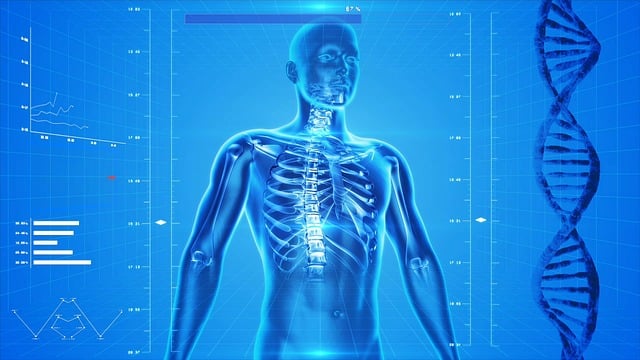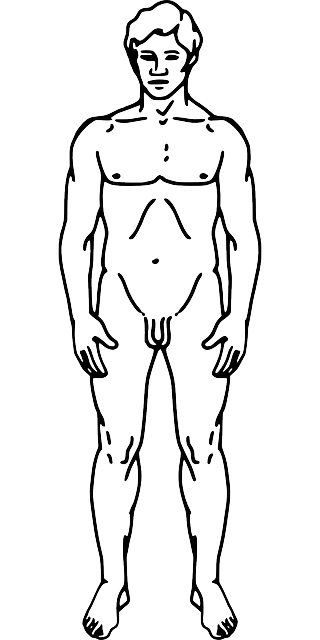Technology is revolutionizing body contouring by offering non-invasive alternatives to traditional surgery, making treatments safer, more accessible, and customizable. Advanced tools like HIFEM devices, lasers, and ultrasound systems enable precise fat reduction and muscle toning. Innovations in 3D scanning, AI analysis, and robotic systems allow professionals to create personalized treatment plans, enhancing results while prioritizing patient safety and satisfaction. These technological breakthroughs are empowering individuals worldwide to embrace their physical appearance with confidence.
“Revolutionize your perception of body contouring with our in-depth exploration of technology’s transformative impact on beauty. From understanding modern body sculpting techniques to uncovering advanced non-invasive procedures, this article delves into the future of aesthetic enhancement.
Discover how 3D imaging and laser technology redefine precision, while exploring the benefits and considerations for patients seeking sculpted figures. Furthermore, we analyze the industry’s evolving trends, predicting the upcoming landscape of body contouring.”
Understanding Body Contouring: The Modern Approach

Body contouring, once a realm of cosmetic surgery, has evolved with modern technology, offering non-invasive alternatives that enhance and reshape the body. This innovative approach leverages advanced tools and techniques to target specific areas of fat reduction or muscle toning, providing folks with a more streamlined and controlled transformation journey.
In today’s digital era, various technologies have emerged, revolutionizing the way we achieve desired body contours. From high-intensity focused electromagnetic (HIFEM) devices that stimulate muscle contraction to laser and ultrasound systems for targeted fat reduction, these modern tools offer precise control and customizable treatments tailored to individual needs. This advancement not only ensures safety but also makes body contouring accessible to a wider range of people seeking to enhance their physical appearance and feel confident in their own skin.
Technology's Role in Shaping the Future of Beauty

Technology is playing a pivotal role in reshaping the future of beauty and body contouring. Innovations such as non-invasive procedures, advanced imaging techniques, and precise robotic systems are transforming the way we approach aesthetics. Through technologies like 3D body scanning, AI-driven analysis, and customized treatment plans, professionals can now offer highly personalized and effective body contouring solutions. These advancements not only enhance results but also make procedures safer and more accessible to a wider range of individuals seeking improved physical appearances.
The integration of technology into beauty practices promises a future where customization, precision, and safety are at the forefront of body contouring. As research continues, we can expect even more breakthroughs that will further democratize access to high-quality, results-driven treatments. This evolution in aesthetics is not just about enhancing physical attributes; it’s about empowering individuals to feel confident and embrace their unique bodies, all while enjoying safer, more efficient procedures.
Non-Invasive Procedures: A Safer Way to Sculpt

Non-invasive procedures have emerged as a safer and more appealing option in the realm of body contouring, revolutionizing the way we approach aesthetics. These cutting-edge technologies offer targeted treatments without the need for incisions or lengthy recovery periods associated with traditional surgeries. One such method is using focused electromagnetic energy to break down fat cells, a process known as lipolysis. This advanced technique allows for localized fat reduction, shaping and defining problem areas without causing significant discomfort or damage to surrounding tissues.
By utilizing innovative technologies, practitioners can now provide effective body contouring treatments that cater to modern consumers’ demands for minimal invasiveness and quick recovery. This shift towards non-invasive practices ensures patients can achieve desired results while maintaining a higher quality of safety and comfort.
Advanced Techniques: From Lasers to 3D Imaging

In the realm of body contouring, technological advancements have introduced innovative techniques that offer precise and effective solutions for achieving desired shapes. One such method is laser technology, which uses targeted light energy to heat and melt away unwanted fat cells, leading to a more sculpted appearance. This non-invasive procedure provides patients with minimal downtime and visible results.
Additionally, 3D imaging has transformed body contouring by offering detailed visualization of the patient’s anatomy. This technology allows practitioners to accurately assess excess fat and muscle distribution, enabling them to tailor treatments accordingly. With such advanced tools at their disposal, professionals can now offer more personalized and successful body contouring procedures, enhancing overall patient satisfaction.
Benefits and Considerations for Patients

Body sculpting technology offers a non-invasive approach to body contouring, providing patients with several advantages. One of the key benefits is minimal recovery time compared to traditional surgical procedures. This allows individuals to resume their daily activities faster, reducing downtime and potential risks associated with surgery. Additionally, these technologies often result in less discomfort and no visible scars, making them appealing options for those seeking a more subtle transformation.
When considering body contouring treatments, patients should be informed about potential side effects and results. Different technologies may yield varied outcomes, and realistic expectations are crucial. Some procedures might require multiple sessions to achieve the desired effect, while others offer one-time results. Consulting with qualified professionals ensures patients understand the process, potential risks, and long-term benefits, empowering them to make informed decisions regarding their body contouring journey.
The Impact on the Industry: Trends and Predictions

The advent of technology has significantly reshaped the landscape of body contouring, revolutionizing how professionals approach aesthetic enhancements. Advanced tools and techniques are now at the disposal of practitioners, enabling them to deliver more precise and effective results. From laser-assisted procedures that minimize recovery time to 3D imaging which offers detailed visualizations, these innovations have set new standards in the industry. As technology continues to evolve, we can expect further breakthroughs in non-invasive body sculpting methods, making treatments safer, faster, and more accessible.
Trends suggest a growing demand for personalized and minimally invasive procedures. Patients are increasingly seeking natural-looking results without enduring lengthy recovery periods. Technology is aligning with this preference by developing targeted treatments that address specific areas of concern. Additionally, the integration of artificial intelligence (AI) in body contouring promises to enhance patient outcomes through data-driven insights, allowing for tailored interventions and predictive analysis. These advancements not only cater to the needs of modern consumers but also position the industry for continued growth and innovation.
